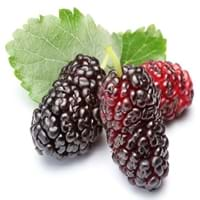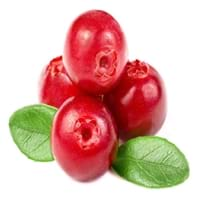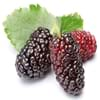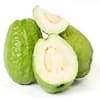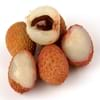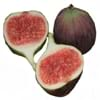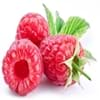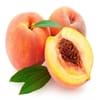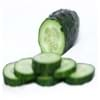Health Benefits
Anti-aging benefits, Boosts immune system, Cancer prevention, Flu treatment, Hair care, Heart care, Improves eye vision, Increases metabolic rate, Kidney stone treatment, Maintains healthy cholesterol level, Skin cleansing, Skin rejuvenation, Treatment of common cold, Treatment of skin Diseases
Cancer prevention, Heart care, Kidney stone treatment, Scurvy treatment, Ulcer prevention
General Benefits
Boosts immune system, Controls blood sugar levels, Flu treatment, Improves eye vision, Maintains healthy cholesterol level, Treatment of common cold
Anti-inflammatory properties, Boosts immune system, Digestive aid, Fights against infections, Strengthens bones
Skin Benefits
Anti-aging benefits, Skin cleansing, Treatment of skin diseases
Anti-aging benefits, Reduces wrinkles, Skin rejuvenation, Treatment of acne
Hair Benefits
Protects hair, Regulates hair growth
Promotes longer and healthier hair, Protects hair, Treatment of dandruff
Allergy Symptoms
Breathing difficulty, Itching, Nasal congestion, Redness of eyes, Runny nose, Sneezing
Anaphylaxis, Breathing difficulty, Itching, Skin rash, Swelling of mouth, tongue or lips
Side Effects
Decrease in blood sugar levels, Allergic reaction
Allergic reaction, Diarrhoea, Nausea, Stomach pain, Vomiting
Best Time to Eat
Best if taken as a breakfast (or empty stomach), As a snack in the late afternoon, Don't consume at night and before bed, Eat the fresh ones, avoid mixing with any other foods, don't eat after meal., Morning time (before lunch)
Any time except an hour after meal, Don't consume at night and before bed
Vitamin B5 (Pantothenic Acid)
Not Available
Vitamin C (Ascorbic Acid)
Vitamin K (Phyllochinone)
Calories in Fresh Fruit with Peel
Calories in Fresh Fruit without Peel
Not Available
Not Available
Calories in Canned Form
Not Available
Season
Spring, Summer
Autumn
Varieties
Charparral, Pendula, Teas, Bellaire and Lingan
Early Black, Howes, Ben Lear and Stevens
Color
Pink, Purple, White
Red
Origin
China
North America
Soil Type
Clay, Loam
Clay, Sandy, Well-drained
Climatic Conditions
Sunny
Warm
Facts about
- It can take up to 10 years for a tree to produce mulberry fruit.
- Mulberry leaves are fed to silkworms to enhance silk production.
- In Germany, they say that devil uses root of mulberry tree to polish his boots.
- Europeans thought the cranberry blossom looked like the head of a sandhill crane, hence the name Cranberry.
- They are also known as bounce berries as they bounce when they ripe.
- Cranberries do not grow in water.
Top Producer
China
United States of America
Other Countries
Colombia, Egypt, India, Indonesia, Kenya, Mexico, Pakistan, Peru, Russia, United States of America
Azerbaijan, Belarus, Bulgaria, Canada, Latvia, Macedonia, NA, Romania, Tunisia, Ukraine
Top Importer
Not Available
Europe
Top Exporter
China
United States of America
Botanical Name
Morus Alba
Vaccinium Macrocarpon
Synonym
Morus atropurpurea or Morus multicaulis
Oxycoccus macrocarpus
Subkingdom
Tracheobionta
Tracheobionta
Division
Magnoliophyta
Magnoliophyta
Class
Magnoliopsida
Magnoliopsida
Subclass
Alismidae
Dillenhidae
Family
Moraceae
Ericaceae
Species
M. alba
Vaccinium macrocarpon
Generic Group
Mulberry
Heath
Difference Between Mulberry and Cranberry
We might think that Mulberry and Cranberry are similar with respect to nutritional value and health benefits. But the nutrient content of both fruits is different. Mulberry and Cranberry Facts such as their taste, shape, color, and size are also distinct. The difference between Mulberry and Cranberry is explained here.
The amount of calories in 100 gm of fresh Mulberry and Cranberry with peel is 43.00 kcal and 46.00 kcal and the amount of calories without peel is Not Available and Not Available respectively. Thus, Mulberry and Cranberry belong to and category.These fruits might or might not differ with respect to their scientific classification. The order of Mulberry and Cranberry is Rosales and Ericales respectively. Mulberry belongs to Moraceae family and Cranberry belongs to Ericaceae family. Mulberry belongs to Morus genus of M. alba species and Cranberry belongs to Vaccinium genus of Vaccinium macrocarpon species. Beings plants, both fruits belong to Plantae Kingdom.
